Ballet Diary No. 3: American Ballet Theatre: Opening-night gala; La Bayadère (ABT’s season runs through July 10 at the Metropolitan Opera House, Lincoln Center); Unrelated Solos / Baryshnikov Arts Center / May 19-22; New York City Ballet: Benjamin Millepied (NYCB’s season runs through June 27 at the David H. Koch Theater, Lincoln Center)
Note: This is No. 3 in the series “Ballet Diary,” commenting on the spring seasons of New York City Ballet and American Ballet Theatre, along with related performances. To read the previous pieces in the series, click here: No. 1; No. 2. The completed “Ballet Diary” series will comprise nine essays.
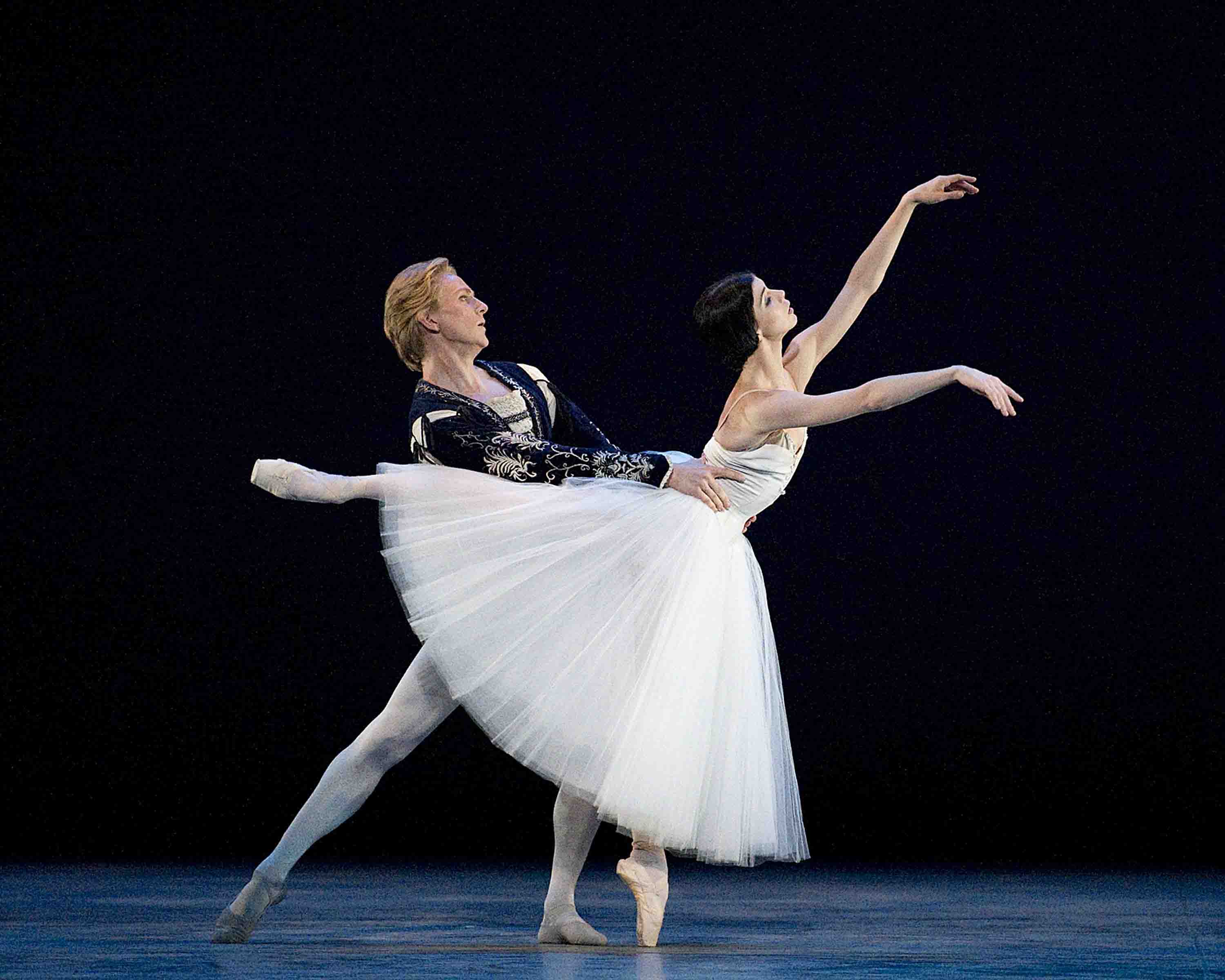
Natalia Osipova, partnered by David Hallberg, in Giselle, at ABT’s opening-night gala
Photo: Gene Schiavone
American Ballet Theatre’s opening night gala, May 17 at New York’s Metropolitan Opera House, served as a tasting menu. The program comprised a selection of excerpts–almost all from ballets known to please. It gave every star at the top of the company’s roster a chance to shine, and showed off the corps de ballet not just once but twice.
The program was too long, of course, and the myriad excerpts that made it so were almost all too short to give the audience more than a glimpse of the fascination dancing compels when it’s allowed to be expansive. But there were several lovely–even glorious–moments. True, a few items misfired but, hey, it’s ABT’s 70th anniversary and it would be rude to rain on its party.
The preliminaries included a walk-on, in gorgeous mufti, of seven artists who have been essential to the company’s history: Lupe Serrano, Martine van Hamel, Nina Ananiashvili, Mikhail Baryshnikov, Alessandra Ferri, Natalia Makarova, and Frederic Franklin. Then there was speechifying by ABT’s artistic director, Kevin McKenzie, Caroline Kennedy, Blaine Trump, and the evening’s honoree, David H. Koch. Koch donates generously to big-time cultural institutions like ABT. (He made a major contribution to the renovation of the New York State Theater–the New York City Ballet’s home–and got the place renamed for him.) Here he reiterated his promise of substantial support for a lavish Nutcracker that will premiere at BAM this winter and make the company lots of money. Said to be the 10th richest man in America, he came across, disarmingly, as just an ordinary guy.
Then came the dancing. The event on the program was the guest appearance of the Bolshoi Ballet’s young phenomenon, Natalia Osipova, partnered by ABT’s immaculate classicist, David Hallberg, in an excerpt from Act II of Giselle. Osipova’s rendition of Giselle as a lyrical wraith, returned from the dead to dance for one last time with the feckless lover who understands true love too late, was refined seemingly beyond human limits. In the famous adagio, her interpretation was pristine and spooky; then, when the tempo accelerated, it became feathery, weightless. The overall effect wasn’t tragic, since the performance seemed more the result of endless coaching rather than instinct, but it was thrilling none the less.
Another development that may be the result of intense coaching is Michele Wiles’s adding a dimension of artistry to her familiar technical prowess. Performing the Rose Adagio from The Sleeping Beauty–a test of balance and timing that gives the most assured ballerinas the quivers–she managed to cloak the challenges in the springtime softness and pleasure of a princess meeting her first suitors on her 16th birthday. Yes, this burgeoning still looks learned rather than instinctive but, for Wiles, it’s an essential step in the right direction.
The Act III pas de deux from Don Quixote supplied the gala’s requisite dose of bravura at its most flamboyant. Gillian Murphy and Ethan Stiefel, both certified virtuosi, were in fine form, Murphy tackling the notorious 32 fouettés by making many of the turns multiple ones, and generally applying modesty and wit to her assignment. Stiefel was a shade too show-offy, embellishing the completion of his feats with hand flicks à la russe that are blatant signals for applause. Yet one forgives him almost anything witnessing his near-miraculous recovery from an injury that might have ending his dancing career.
Frederick Ashton, the most poetic of Britain’s choreographers, was represented by two ballets–the haunting Thaïs pas de deux and an excerpt from Birthday Offering, a survey, both aristocratic and graceful, of the choreographer’s neo-classic mode, which gave the Royal Ballet its profile. Needless to say, ABT’s dancers haven’t been bred to dance Ashton, but their efforts to grasp the nature of his style are sufficient to reveal both the beauties of the choreography and the dance-making intelligence that pervades it.
Nearly all of the excerpts on the gala program will, as if via the magic wand of Cinderella’s godmother, turn into full ballets in the course of ABT’s season, which continues through July 10.
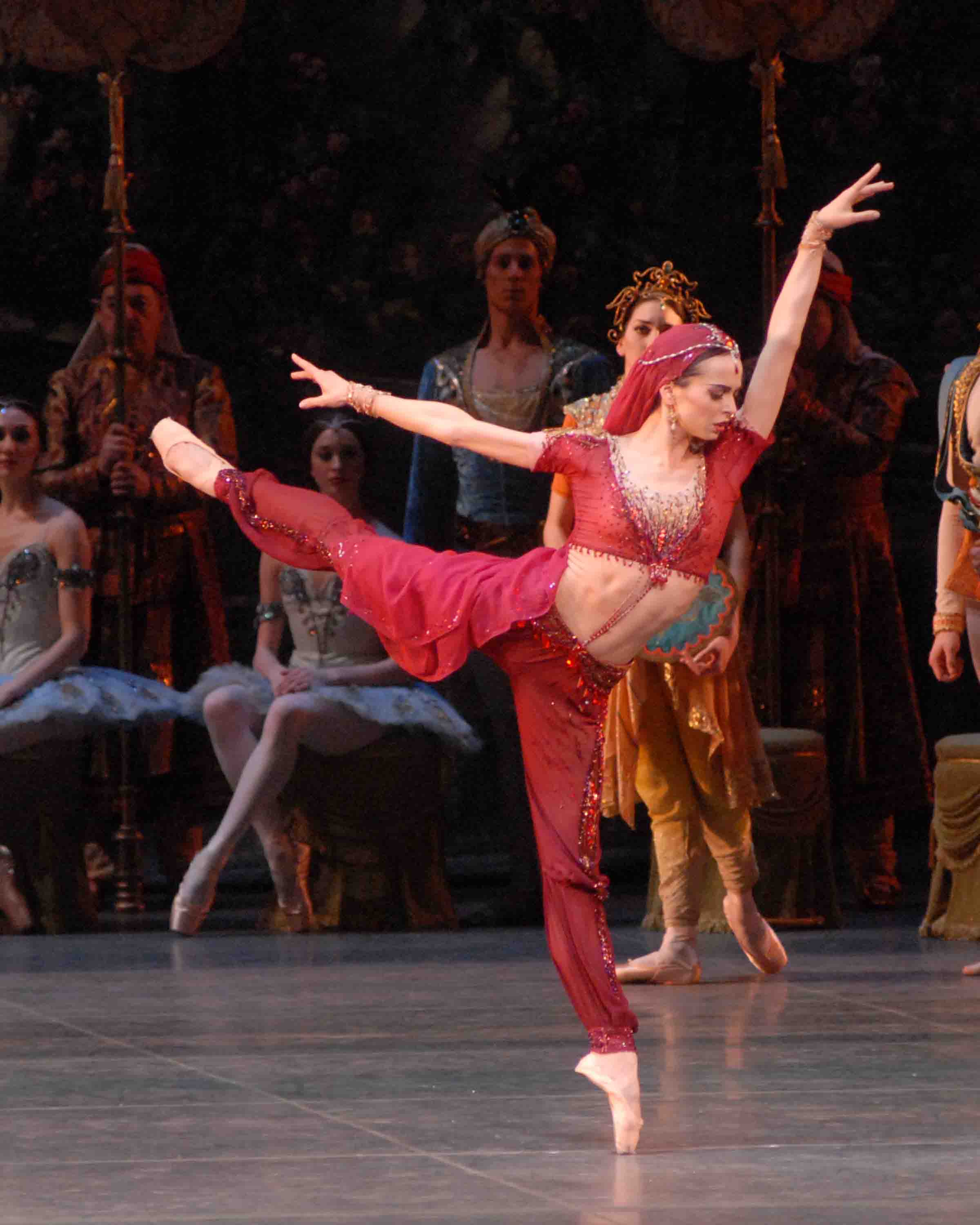
Diana Vishneva as Nikiya in La Bayadère
Photo: MIRA
How many times in close succession can you enjoy seeing La Bayadère? ABT launched its weeks of repertory with eight performances in a row of Marius Petipa’s Russo-Indian creation–full of hokey melodrama and ersatz local color, yet intermittently divine. Indeed, on two days, thanks to the magic of matinees, you could see it twice.
This is typical of ABT’s current programming style. Many followers of the company, including me, prefer the old repertory system, in which programs of shorter ballets were changed daily and the components were not forced to be related by theme. Truth to tell, one Bayadère a season is enough for me, though I could look at the ballet’s ineffable “Kingdom of the Shades” scene frequently, to satisfy my craving for the sublime. Last week, faithful to professional duty, I saw the full ballet twice, first with Diana Vishneva, Gillian Murphy, and Marcelo Gomes, respectively, in the leading roles of Nikiya (the pure, put-upon girl who is dead for half the ballet), Gamzatti, (a jealous poisoner, perhaps with some cause), and Solor (like many a man, of two minds when it comes to a major choice). The next day I saw the Julie Kent-Hee Seo-Jose Manuel Carreño cast.
Natalia Makarova supervised the production she had staged first in 1980, revivifying it with close attention to both the purity of classical technique and detailed dramatic motivation. If a few of her decisions are questionable–such as the achingly slow tempi for adagio work, a conceit of Russian ballerinas who want to look ineffable–most justify the 19th-century ballet’s claim to ongoing life in the 21st.
Vishneva made a terrific Nikiya, her steely technique operating under the guise of melting vulnerability and the notion that a heart can remain faithful even in the next world. She’s one of the most accomplished actor-dancers around. If the multi-faceted passions she portrays seem synthetic at times–their lack of spontaneity is the giveaway–she often persuades even the most recalcitrant viewer to succumb to her spell. Kent, granted, trumps Vishneva in pathos–her willowy body and fragile beauty make her look born for the pathetic mode–but some of Bayadère‘s physical challenges are now beyond her.
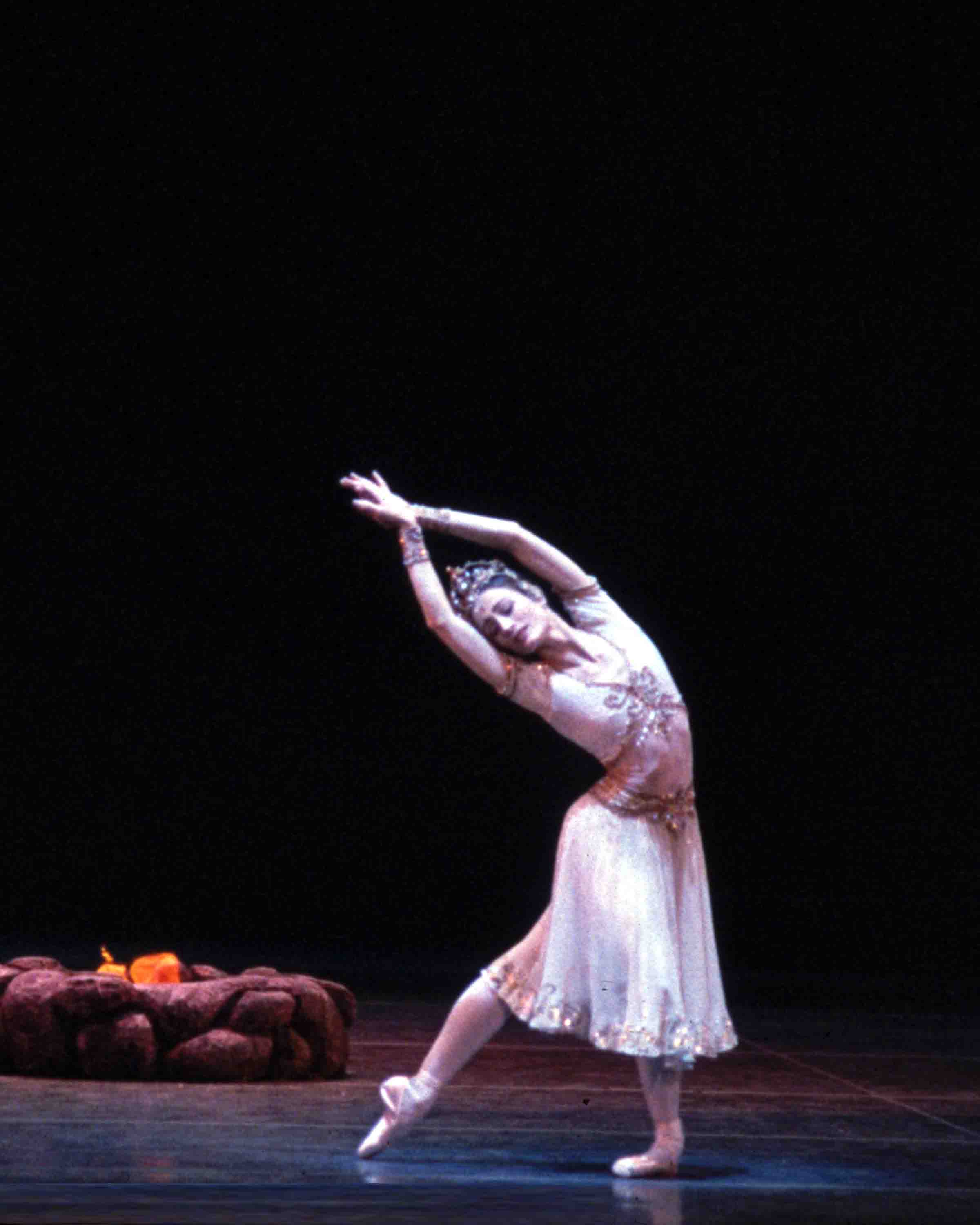
Julie Kent as Nikiya in La Bayadère
Photo: MIRA
Murphy, who has technical confidence to spare and an uncanny resemblance onstage to Bette Davis, was just right for the proud, icy hearted Gamzatti, a rajah’s daughter to whom no one has ever before said no. When offers of jewels and the haughty assertion of rank’s privileges fail to persuade Nikiya to relinquish her claim to Solor’s love, what’s a handsome, filthy rich, singularly self-involved young woman to do but send her rival a bouquet in a basket that happens to harbor a poisonous snake?
The alternate Gamzatti, Hee Seo, has risen so quickly at ABT that she’s still listed among the corps de ballet. Her technique is impressive and she has the magnetic presence of a star. Yet thus far, in the realm of artistry, she remains an enigma. You have no idea of who or what she is as a dancer. As for what she might become, time will tell. Just now she smiles and smiles, presenting herself as a blossom worth plucking.
Both Gomes and Carreño surpassed themselves as Solor, their several solos making their customary bravura feats exceptionally clear and precise, rather than (as such astonishing exploits usually are) undertaken on a wing and a prayer, with a wild surge of energy. Both men moved with velvety texture–Gomes with the gravity that so becomes him, Carreño with his trademark ingratiating sweetness–towards his partner and, I’d guess, in homage to the joy of dancing. Gomes had the advantage over Carreño in that he was working with the more impressive co-stars, and the performance I saw of the Gomes-Vishneva-Murphy triad was nothing short of spectacular, one artist taking fire from another.
The female corps de ballet of the “Kingdom of the Shades” scene was better than ever; the choreography’s demand for impeccable adagio dancing in unison seemed to have the 24 women breathing as one. As it’s presently performed, this passage is a perfect argument for the idea that an ensemble can be a main character in a ballet.
The High Brahmin, the kind of secondary role so easily treated as a cipher, was given persuasive and individual meaning by Victor Barbee (Vishneva cast) and Roman Zhurbin (Kent cast). In each portrayal you saw, phrase by phrase, the conflict of a religious dignitary, glorying in his power, who finds himself overcome by lust for the most exquisite vestal virgin in his temple. The fact that Nikiya already has a boyfriend, Solor, whom she will lead to Paradise –when all is said and done and everyone perishes in the destruction of the temple–is one of the several things making Bayadère seem silly, but never mind.
Mikhail Baryshnikov was the leading dancer–isn’t that a given whenever he appears?–in Unrelated Solos, May 19-22, part of the inaugural season of the Jerome Robbins Theater at the Baryshnikov Arts Center. The new performance space is small, austere, and glum. Without distinction of design, it serves its purpose in a workaday fashion.
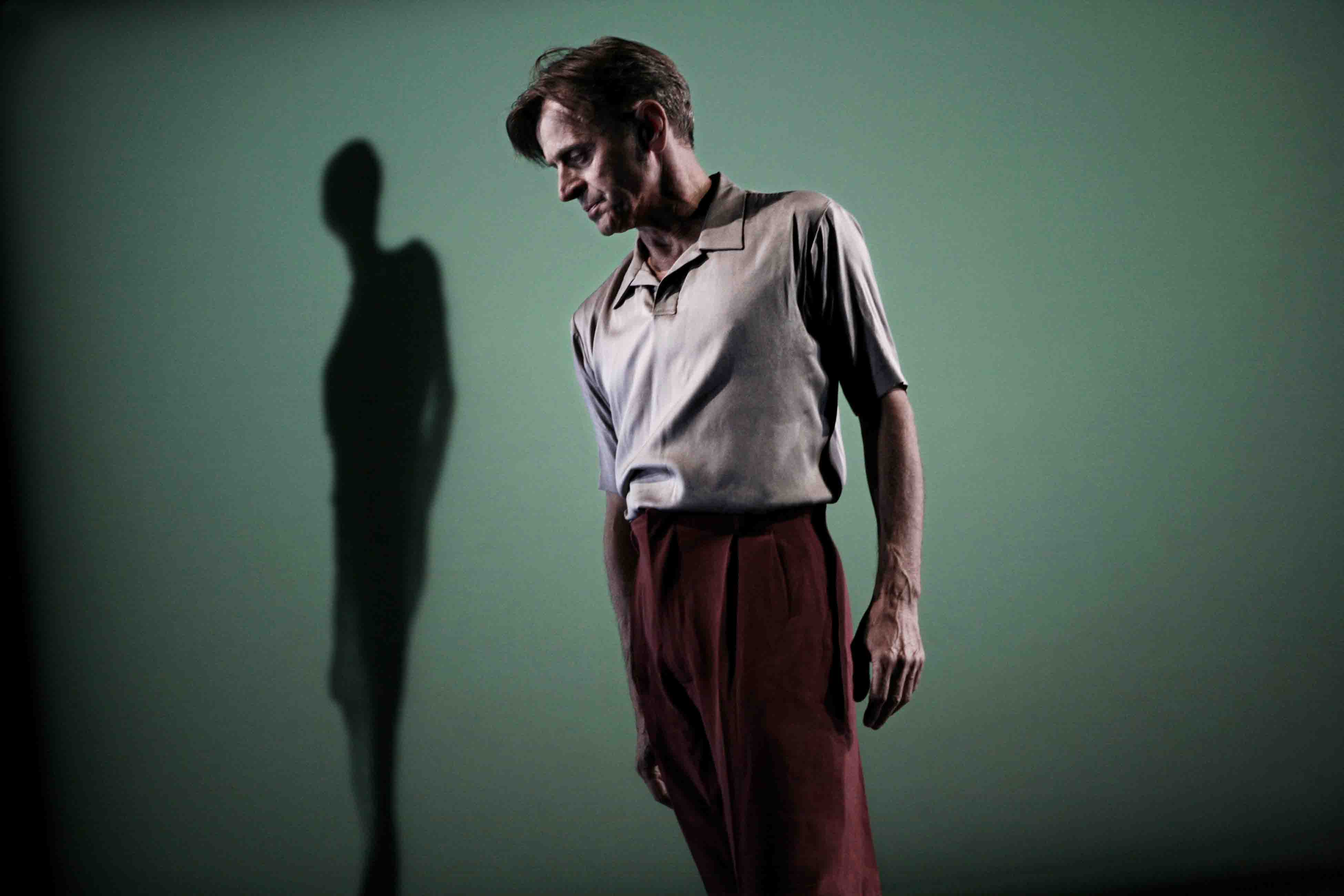
Mikhail Baryshnikov in Benjamin Millepied’s Years later
Photo: Julieta Cervantes
The key pieces on the program were Benjamin Millepied’s Years later (to music by Philip Glass) and Alexei Ratmansky’s Valse-Fantasie (to the fervid Glinka music of that name). The two choreographers offered strikingly disparate views of the extraordinarily gifted dancer whose athletic prime ended at least two decades ago and who has yet found myriad ways of carrying on.
The Millepied solo depends on film footage of the 17-year-old Baryshnikov as a student at the Vaganova Academy, from which he’d be launched into the Kirov Ballet. Captured in grainy black and white, he’s a prodigy with an angelic face, performing feats of classical perfection in a barren studio. The astonishing dancing image is projected on the backdrop of Years later for today’s Baryshnikov to interact with. Even when Baryshnikov is not being challenged by his youthful self, Millepied’s choreography manages to make the 62-year-old artist appear stiff and desiccated. The fiery energy seems quenched; the elasticity, vanished; the flow of movement through a supple body, blocked. Basically, Millepied’s piece tells us, “Yesterday wins.”
Ratmansky, on the other hand, draws on everything Baryshnikov can do–can be today–obliterating a veteran spectator’s sense of what has been lost in favor of a lyrical and luminous now. The little ballet opens with a recorded voice telling the tale of Glinka’s thwarted infatuation with a young woman: At the time, it broke his heart, but some years later, when he met her again, he had no feeling for her at all.
The story is choreographed as a rapid succession of segments that, like fireworks, illuminate the space, then just as swiftly fade from view. Ratmansky uses the gifts that Baryshnikov still possesses in good measure: harmony of line, precision of placement, acumen in mime, a sense of humor, and undiminished charm. Most important, the choreographer finds a way to restore to Baryshnikov the flow that is pretty much essential to dancing. As Baryshnikov cruises through space, he might be an emblem of freedom and joy.
The choreography is well-nigh Chekhovian, proposing that the past floods through you at moments in the present, when you can have a good look at it armed with the experience and wisdom of your maturity and laugh at it, scorn it, or refuse it–but never forget it.
Ratmansky gives us a man–an artist–who is fully alive in the
present.
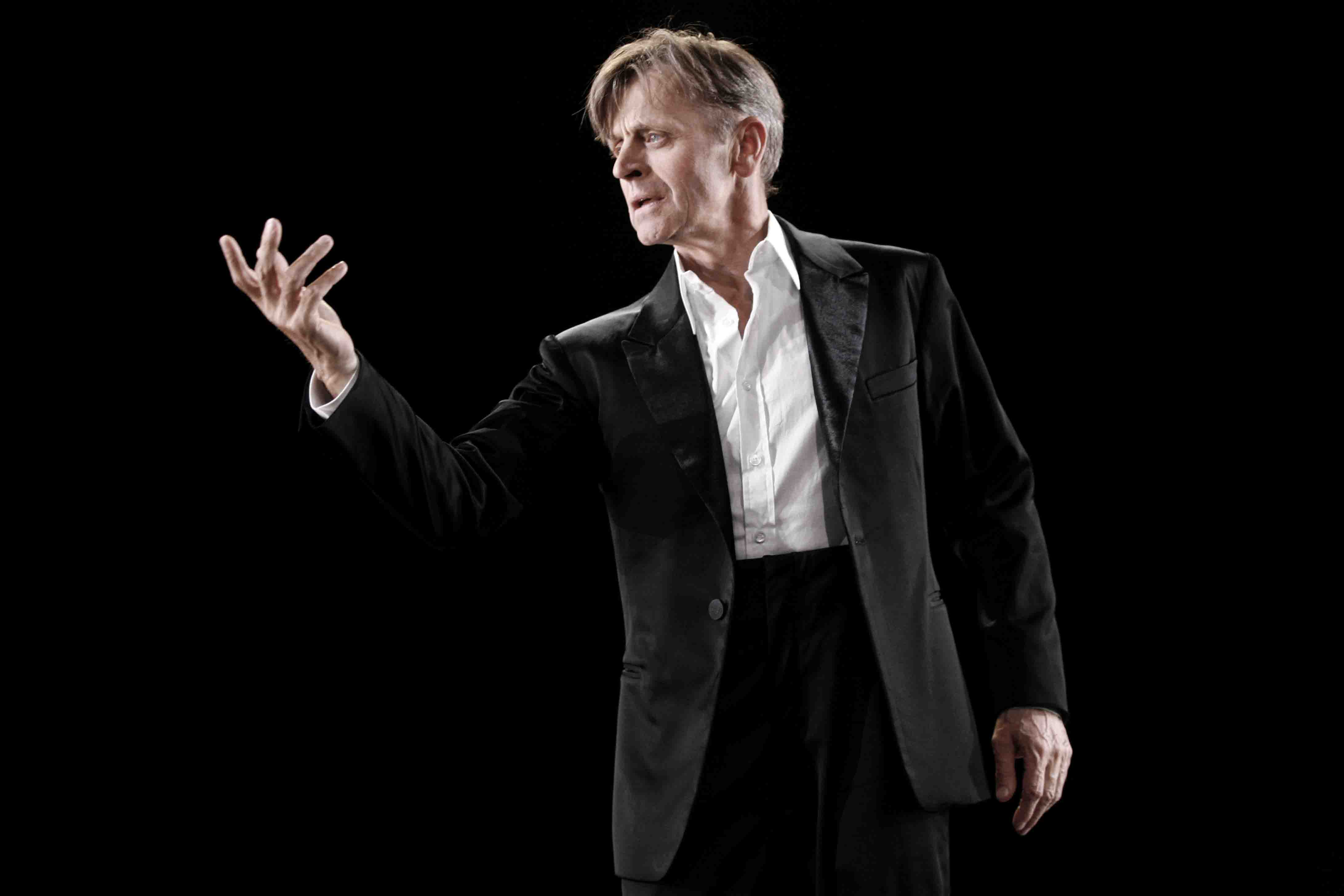
Mikhail Baryshnikov in Alexei Ratmansky’s Valse-Fantasie
Photo: Julieta Cervantes
The program’s six solos were indeed unrelated, as promised. The veteran postmodernist Steve Paxton appeared in a seemingly endless string of restricted, even crippled, moves that gradually ensnared one’s attention and eventually ignited one’s imagination. Choreographed by Paxton and called The Beast, the piece made me think of Shakespeare’s Caliban–a creature with just enough sentience to feel trapped in his limitations. David Neumann performed two of his solos; reminiscent of Daniel Nagrin’s character studies, they sorely lacked Nagrin’s finesse.
For a finale Baryshnikov danced a “solo” that recruited three members of the audience–Susan Marshall’s For You. It is, perhaps, an exploration of a star performer’s relationship to his spectators. But who knows? Marshall’s a subtle and canny one and the piece was billed as a work in progress.
When I wrote briefly about Benjamin Millepied’s Why am I not where you are–one of the seven new ballets commissioned for New York City Ballet’s “Architecture of Dance” festival, I said–having seen its premiere under the hectic circumstances of the company’s opening night gala–that I’d comment further on it. I’ve seen it a second time now, but can’t bring myself to write about it. I think I’m doomed not to “get” Millepied’s choreography. Although I’ve tried assiduously over the years, I simply can’t discover what there is to admire, let alone love, about it.
Granted, Millepied uses the classical vocabulary (and one must be grateful for that in our tradition-scorning era), but he fails to achieve anything organic or even adept in his deployment of bodies in space, let alone anything that stirs the heart or soul. All I see is arid, often awkward, calculation. Nevertheless, he has carved out an impressive career for himself. Ballet fans have cautiously begun to name him along with the best of his generation, Ratmansky and Wheeldon.
© 2010 Tobi Tobias




Thank you, Tobi, for your recognition of ABT’s corps de ballet in “La Bayadere.” They give their heart and soul to that ballet – 24 ballerinas performing as one – sublime and pure. They deserve notice.
Tobi, I can tell you are having lots of fun doing this!
Jeff
How characteristic of that thoroughly wonderful dame Susan Jones to leave the comment below. I had the pleasure of interviewing her for an article on ballet masters for Dance Magazine some years ago, in which she described to me what Makarova had told her about training/coaching the corps in “Bayadere,” illuminating for me exactly what 24 ballerinas performing as one means.
I’m grateful to TT for giving me such a clear window on to the ABT season, which is, frankly, much too laden with traditional ballets to make me want to attend “live and in person,” as my daughter used to say, with the exception of “Bayadere,” which I have never seen in complete form save on film.
Baryshnikov in Ratmansky’s “Valse-Fantasie” and Millepied’s “Year’s later” I not only saw last fall in Portland but also reviewed for the Oregonian. Interestingly enough, I too used the word Chekhovian to describe Ratmansky’s choreography as well as Baryshnikov’s performance, and I really loved the ballet.
I confess also to loving “Years later” and would suggest that the stiffness of Baryshnikov’s movement commentary on the film clip of his very much younger self might have been deliberate, to show what we are pleased these days to call the aging process. His face was certainly mobile: at one point he seemed to be saying “Why in hell would anyone want to do that?”